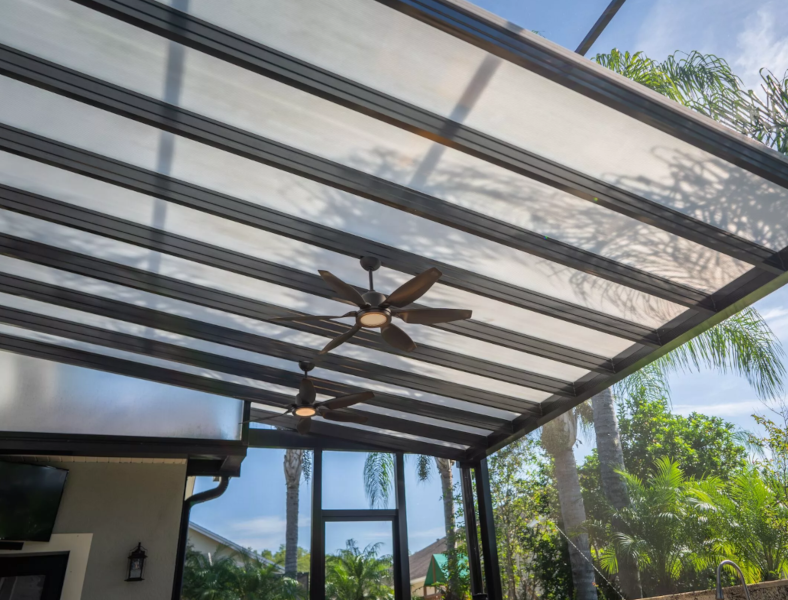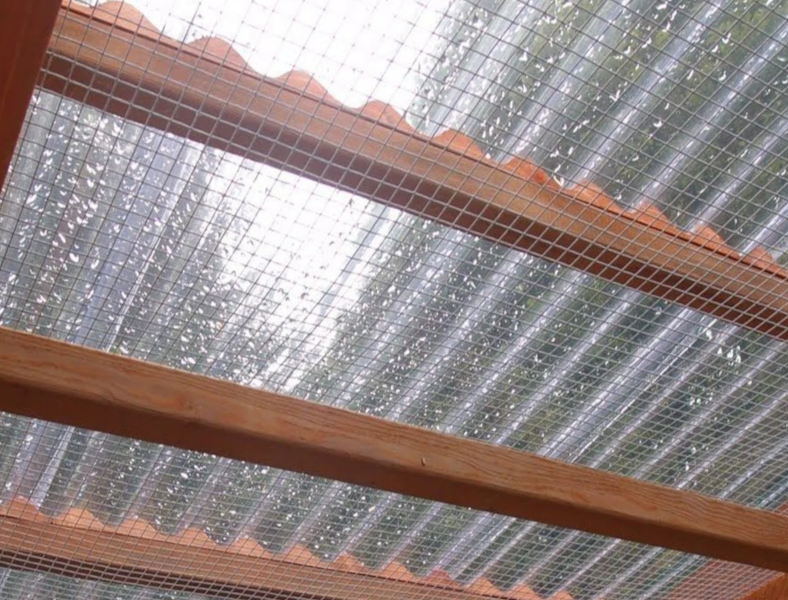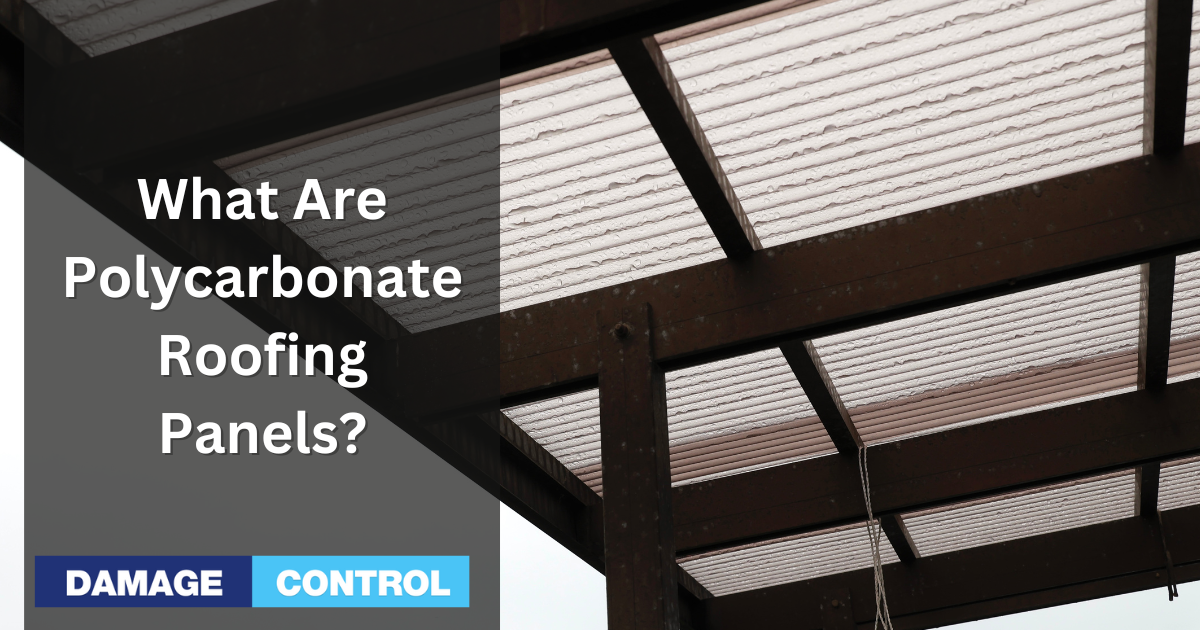Polycarbonate roof panels have become a popular choice in the world of roofing, thanks to their versatility, durability, and energy efficiency. Made from a strong thermoplastic material, these panels are lightweight and easy to install, making them ideal for both residential and commercial applications.
These innovative roofing solutions offer an array of benefits. They're weather-resistant, UV-protected, and virtually unbreakable, providing a long-lasting option for homeowners and professionals alike. Polycarbonate roof panels are a modern and efficient choice for various projects, commonly used in greenhouses, sunrooms, pergolas, and carports.
Types of Polycarbonate Roof Panels

Solid polycarbonate panels
When strength meets clarity. Solid polycarbonate panels are a single layer of the material, offering excellent impact resistance and clarity. They're ideal for applications where transparency and durability are essential, such as skylights, windows, and doors.
Multiwall polycarbonate panels
Layer it up. Multiwall polycarbonate panels have multiple layers, creating air pockets that improve insulation and rigidity. There are three main types:
Twin-wall
Double the fun. Twin-wall panels consist of two layers of polycarbonate with an air space in between. These panels provide better insulation and strength than single-layer panels, making them suitable for greenhouses, sunrooms, and other applications requiring energy efficiency.
Triple-wall
Three's a charm. Triple-wall panels have—you guessed it—three layers of polycarbonate with two air spaces. This structure offers even greater insulation and rigidity, making them perfect for demanding applications where temperature control is crucial.
Five-wall
Ultimate performance. Five-wall panels boast five layers of polycarbonate and four air spaces. These heavy-duty panels deliver maximum insulation and strength, ideal for large commercial projects or buildings in extreme climates.
Corrugated polycarbonate panels
Ride the wave. Corrugated polycarbonate panels have a wavy, ribbed surface that adds structural strength and sheds water effectively. They're lightweight, easy to handle, and often used for roofing applications like carports, sheds, and agricultural buildings.
Material Properties and Characteristics
Durability
Built to last. Polycarbonate roof panels are known for their impressive durability. They resist cracking, warping, and yellowing, ensuring a long lifespan with minimal maintenance.
Impact resistance
Tough as nails. These panels are 200 times stronger than glass and virtually unbreakable. They can withstand extreme impacts from hail, debris, and even vandalism without breaking or shattering.
Weather resistance
Bring on the elements. Polycarbonate roof panels are designed to handle harsh weather conditions, including wind, rain, and snow. Their high-performance materials stand up to temperature fluctuations, ensuring top-notch performance year-round.
UV protection
Sun protection, check. Polycarbonate roof panels come with built-in UV protection. They block harmful UV rays, protecting everything beneath them from sun damage while still letting in plenty of natural light.
Thermal insulation
Stay cool, or cozy. Multiwall polycarbonate panels offer excellent thermal insulation, thanks to their air pockets. This means less heat transfer, which keeps your space cooler in the summer and warmer in the winter, ultimately saving on energy costs.
Light transmission and diffusion
Let there be light! Polycarbonate roof panels excel at transmitting and diffusing natural light. They allow sunlight to pass through without glare, creating a bright and comfortable environment. Plus, you can choose from various levels of light transmission, depending on your specific needs.
Choosing the Right Polycarbonate Roof Panel for Your Project

Assessing your needs
First things first. Evaluate your project's requirements, such as insulation, light transmission, and aesthetics. Consider the purpose of your space, whether it's a greenhouse, sunroom, or carport, and select a panel type that aligns with your goals.
Panel thickness
Size matters. Polycarbonate panels come in various thicknesses, which impact their strength, insulation, and light transmission. Thicker panels generally offer better insulation and impact resistance, so choose a thickness that meets your project's demands.
Color and light transmission
Set the mood. Polycarbonate roof panels are available in a range of colors and light transmission levels. Clear panels offer the highest light transmission, while tinted or colored panels provide varying degrees of shading. Assess your space's lighting needs and select a panel that offers the desired balance of light and shade.
UV protection levels
Stay safe in the sun. Most polycarbonate panels come with built-in UV protection. However, the level of protection may vary between products. Determine the amount of UV protection required for your project and choose panels accordingly.
Budget considerations
Last but not least, the budget. Polycarbonate roof panels can vary in price, depending on factors such as thickness, type, and UV protection levels. Compare the costs of different options and select a panel that meets your requirements without breaking the bank. Remember, investing in high-quality materials can save you money on maintenance and replacements in the long run.
Installation and Maintenance
Preparing the surface
A solid foundation. Before installing polycarbonate roof panels, ensure the surface is clean, level, and structurally sound. Remove any debris or protrusions that might damage the panels or interfere with installation.
Cutting and drilling panels
Use a fine-toothed saw or circular saw with a suitable blade to cut polycarbonate panels. For drilling, use a step drill bit designed for plastics. Make sure to allow for thermal expansion by drilling slightly larger holes than the fasteners.
Fastening and sealing
Hold tight. Secure the panels with appropriate fasteners, such as screws or nails designed for polycarbonate. Use rubber gaskets or sealing tape to create a watertight seal between the panels and the supporting structure.
Ventilation and condensation control
Proper ventilation is crucial for preventing condensation and promoting air circulation. Install quality whirlybird vents or vent systems at the ridge (known as ridge vent systems), and ensure there's adequate airflow between the panels and the underlying structure.
Cleaning and maintenance tips
Regularly inspect your polycarbonate roof panels for debris, dirt, or algae buildup. Use a soft brush or sponge and mild soapy water to clean the panels, rinsing thoroughly with clean water. Avoid using abrasive cleaners or pressure washers, as they may damage the surface. With proper care, your polycarbonate roof panels will maintain their performance and appearance for years to come.
Popular Brands and Manufacturers
Suntuf
A trusted name. Suntuf is known for its high-quality polycarbonate roof panels, offering a range of products for residential, commercial, and agricultural applications. Their panels are known for durability, UV protection, and light transmission, making them a popular choice among homeowners and professionals alike.
Palram
World-class materials. Palram is a leading global manufacturer of polycarbonate panels, offering a diverse product line for various applications. Their panels are designed with advanced technology, providing excellent impact resistance, insulation, and UV protection.
Polygal
Innovative solutions. Polygal is a pioneer in the development and production of multiwall polycarbonate panels. Their products are widely used in construction, agriculture, and architecture, thanks to their excellent insulation, strength, and light transmission properties.
SUNLITE
Bright ideas. SUNLITE is a brand of multiwall polycarbonate panels by Palram, known for their exceptional light transmission, insulation, and durability. These panels are widely used in residential and commercial projects, providing an energy-efficient and attractive roofing solution.
Comparing Polycarbonate Roof Panels to Other Roofing Materials
Glass
Crystal clear, but fragile. Glass offers excellent light transmission, but it's significantly heavier and more fragile than polycarbonate. Polycarbonate panels are much stronger, more impact-resistant, and lighter, making them a safer and more practical choice for many applications.
Fiberglass
Light and durable, yet less versatile. Fiberglass is a lightweight and durable roofing material, but it doesn't offer the same insulation, UV protection, or light diffusion as polycarbonate. Additionally, fiberglass tends to become brittle and discolored over time, whereas polycarbonate remains strong and maintains its appearance.
Metal
Strong and long-lasting, but less light. Metal roofing is known for its durability, weather resistance, and low maintenance. However, it doesn't transmit light, making it less suitable for applications where natural light is desired. Polycarbonate panels provide the best of both worlds, combining strength with excellent light transmission.
Asphalt shingles
Popular but not perfect. Asphalt shingles are a common roofing material due to their low cost and ease of installation. However, they don't offer the same level of insulation, light transmission, or impact resistance as polycarbonate panels. Plus, asphalt shingles have a shorter lifespan and require more maintenance than polycarbonate roofing.
Frequently Asked Questions
Are polycarbonate roof panels safe?
Absolutely. Polycarbonate panels are impact-resistant, fire-resistant, and shatterproof, making them a safe choice for roofing applications.
How long do polycarbonate roof panels last?
With proper installation and maintenance, polycarbonate roof panels can last 10 to 20 years or more, depending on the product and environmental factors.
Can polycarbonate roof panels be painted?
It's generally not recommended to paint polycarbonate panels, as it may compromise their UV protection and light transmission properties. Instead, choose a panel with the desired color and light transmission level.
How much do polycarbonate roof panels cost?
The cost of polycarbonate roof panels varies depending on factors such as thickness, type, and brand. However, they're generally more affordable than glass and other high-end roofing materials.
Can polycarbonate panels be used for siding or walls?
Yes, polycarbonate panels can be used for siding or walls, providing natural light, insulation, and impact resistance.
Are polycarbonate roof panels hail resistant?
Polycarbonate panels are highly impact-resistant and can withstand hailstorms without cracking or shattering.
Can polycarbonate roof panels be repaired if damaged?
Minor damage to polycarbonate panels can often be repaired using a suitable adhesive or repair tape. However, severely damaged panels should be replaced.
How do I prevent condensation on polycarbonate roof panels?
Proper ventilation and insulation are crucial for preventing condensation on polycarbonate panels. Ensure adequate airflow between the panels and the underlying structure, and install vents or ridge caps at the roof's highest point.
Are polycarbonate roof panels suitable for cold climates?
Yes, polycarbonate panels offer excellent thermal insulation, making them suitable for cold climates.
How do polycarbonate roof panels compare to acrylic panels?
Polycarbonate panels are stronger, more impact-resistant, and provide better insulation than acrylic panels. However, acrylic panels may offer higher scratch resistance and clarity.
Conclusion
In conclusion, understanding polycarbonate roof panels and their benefits is crucial for making informed decisions about your roofing needs. However, this is just one aspect of the vast world of roofing. To further expand your knowledge and make the best choices for your home or business, we encourage you to explore our other informative articles.
To start, consider learning about a list of types of vents on a roof to ensure proper ventilation and extend the lifespan of your roofing system. Additionally, delve into the different types of corrugated metal roofing to discover how they compare to polycarbonate options and which might suit your requirements best.
Furthermore, it's essential to comprehend the fundamental reasons why a roof is important to appreciate the value of making the right choices for your property. Lastly, explore the difference between EPDM and TPO roofing to weigh the pros and cons of these popular commercial roofing materials.
By immersing yourself in these valuable resources, you'll be well-equipped to make informed decisions and ensure your roofing system's longevity, functionality, and aesthetics. So, don't hesitate – dive into these articles and continue your journey to becoming a roofing expert today!

